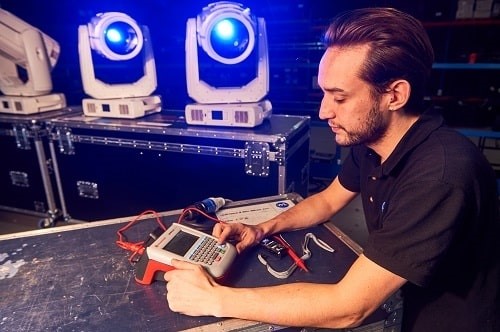Every year many accidents are reported at work involving electricity. Portable appliance testing (PAT) can help employers remain compliant and keep their workplaces safe.
Features
Don’t get your fingers burned
Faulty electrics can cause damage to properties, severely injure people and, in some extreme cases, cause burns or explosions, which could prove fatal. Even non-fatal electric shocks could cause falls from ladders, scaffolds or other work platforms, which in turn could cause permanent injury.
Even those not regularly coming into contact with or working with electricity, such as those working in retail or offices, could be at risk. Poorly installed electrical cables, overloading sockets or damaged appliances could easily cause fire or explosion and potentially endanger whole businesses.
Most of these accidents however can be easily avoided through careful planning, risk assessment and the regular maintenance of electrical equipment and installations.
 PAT testing, as it is known, ensures that the electrical appliances are safe for continued use. Photograph: Seaward
PAT testing, as it is known, ensures that the electrical appliances are safe for continued use. Photograph: Seaward
What the law says?
The law requires that all landlords, employers and even self-employed individuals make sure that their electrical appliances are safe, suitable and used for their intended purpose. The regulations related to this, including: The Health and Safety at Work Act 1974, the Electricity at Work Regulations 1989, the Provision and Use of Work Equipment Regulations 1998, the Management of Health and Safety at Work Regulations 1999, the Workplace (Health, Safety and Welfare) Regulations 1992, the Housing Act 2004 (England and Wales) and the Housing Act 2014 (Scotland).
Compliance
Portable appliance testing (PAT) has become a fundamental requirement for ensuring electrical safety in the workplace.
PAT testing is the examination of electrical appliances and equipment to see if maintenance is required and ensure they are safe for continued use. Many electrical safety defects can be found by visual examination, but some types of defect can only be found by carrying out testing.
Testing and maintenance
Any person carrying out electrical safety checks should be competent to do so with equipment that is fit for purpose and within calibration, to ensure the validity of the results obtained from the testing process etc.
If you have suitable resource and expertise within the company, you can carry out the PAT testing in house. However, if that’s not the case, it is worth employing a contractor to carry out the testing for you.
As with any contractor you employ, it is important to carry out checks on competence, risk assessments, insurances, method statements etc. ahead of commencing work.
Darren Bakewell is electrical safety expert and applications engineer at Seaward Electronic
FEATURES

Why menstruation support matters at work
By Deborah Garlick, Menstruation Friendly by Henpicked on 03 December 2025
Although forward-thinking organisations are increasingly taking action on menopause awareness and support at work, attention is now turning to menstrual health as the next essential step in building an inclusive, equitable and high-performing workplace.

Neurodiversity at work: getting started on creating a supportive environment for neurodivergent workers
By Andy Hooke CMIOSH Chartered health and safety consultant on 03 December 2025
Creating a neuroinclusive workplace brings many benefits, including making neurodivergent employees more comfortable about seeking help and support from managers and colleagues, and there are some simple ways of getting started with the process.

Human-centred technology for better work design: rethinking musculoskeletal disorder prevention
By Cam Stevens, Pocketknife Group on 03 December 2025
Although technologies like computer vision analysis, machine learning and wearable sensors are increasingly being used to identify and assess the causes of work-related musculoskeletal disorders (MSDs), it’s essential to consider data relating to all aspects of work design when seeking to reduce MSDs in the workplace.



